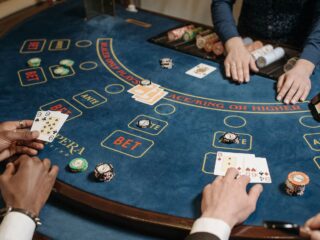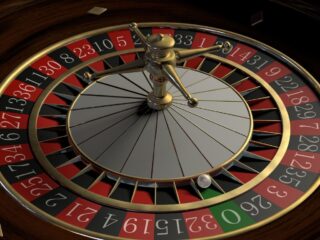Most players think card counting is either dead or too risky. I used to believe that too. Then I learned that live casinos still give you space if you play smart. In this guide, I’ll show you the advanced counting moves I use, how I practice them, and how I keep heat off me at live tables.
If you’re looking for a spot that mixes style with real perks, check out RetroBetCasino. What stood out for me are the weekly reloads, the Lucky Box feature, and even a Bonus Shop where you trade points for rewards. Add fast payouts and 24/7 support, and it feels like a casino built by players for players.
Basics You Need Locked Down
You can’t go advanced if the core isn’t automatic. Use Hi-Lo: low cards (2–6) = +1, high cards (10–A) = –1, rest = 0. Add as cards fall – that’s your running count.
Next, convert to a true count by dividing the running count by decks left. That’s what matters for bets.
Finally, set a simple betting ramp: raise when the score rises, drop when it falls. If you can’t do all three without thinking, don’t move forward yet.
True Count Conversion — The Real Upgrade
The running tally alone doesn’t cut it in live play. You’ve got to adjust for the number of decks left. That’s the true count.
Here’s my shortcut:
- Glance at the discard tray. Estimate decks gone.
- Divide your running count by decks left. Round to the nearest half number.
Example: running count is +12. Four decks remain. 12 ÷ 4 = +3 true count. That’s the real strength of the shoe.
At first, I messed this up a lot. I’d get lazy, call it +3 when it was closer to +2. Over time, I learned when precision matters. If you’re close to a betting threshold (say, moving from 2 units to 4), be sharp. If not, don’t sweat rounding.
Side Counts That Pay Off
The first side count I learned was aces. Why? Because blackjacks pay 3:2. Knowing how many aces remain helps you judge if they’re still coming.
Here’s the method I use: keep a small tally separate from your running score. One finger tap for each ace seen. That’s it.
Another useful side count is sevens in certain systems. I tried it, but dropped it because it slowed me down. My advice: stick with aces until you’re smooth, then decide if another rank is worth it.
Wonging and Partial Entry

Wonging means you stand near a table, count from the side, and only sit when the score is high. In live casinos, this works best at busy pits where staff don’t notice lurkers.
If standing looks weird, try a partial entry. Wait a few rounds and casually join mid-shoe. I’ve done this at plenty of casinos, and as long as you act normal (like you were waiting for a seat or finishing a drink), nobody blinks.
Camouflage: Don’t Look Like a Counter
I got backed off once because I ramped bets too cleanly. Since then, I’ve worked on camouflage.
Here’s what helps:
- Bet in ranges, not fixed jumps. If your ramp says go from 1 unit to 4, sometimes go 3. Sometimes 5.
- Chat a bit. I’ll comment on a dealer’s shuffle or a neighbor’s lucky streak. Makes me look casual.
- Chip handling. Don’t stack chips like an engineer. Sloppy piles feel more natural.
Timing is another big tell. Don’t snap bet the second the cards hit the felt. I wait a couple of seconds sometimes, pretend to “think.”
Team Play and Signals
I’ve teamed up a few times. One method: spotter and big player. The spotter counts while playing small. When the count jumps, they give a signal. Big player swoops in with large bets.
Signals don’t have to be fancy. I’ve used:
- Taking a sip of my drink = hot shoe.
- Scratching nose = cool shoe.
Casinos expect weird hand signals. Normal habits slip right past. And if you want to see how alternative platforms handle things differently, there’s also this list of sweepstakes casinos 2025 – handy if you’re curious about bonus styles and table setups outside the usual live rooms.
Bankroll, Bet Spread, and Variance Control
Your bet spread is what makes or breaks profit. I started with a 1–8 spread on six-deck shoes. That means my smallest bet is 1 unit, my biggest is 8. Enough to get the edge, but not so wild that I stick out.
A quick sizing tip: base bets on about 1/500 of your total roll. If you bring €5,000, your base unit is €10. This way, swings don’t crush you fast, and you can sit longer without heat.
Practice Drills and Warmups
Before I hit a live pit, I warm up. Here’s what I do:
- Run through one deck at home. Aim to finish in under 30 seconds with the right count.
- At the table, I sometimes track just the first round silently before betting. It sharpens me and makes me look casual.
- If my brain feels foggy, I skip. Playing tired is worse than not playing.
Final Word: Upgrade Your Game
Advanced card counting is just a set of small tweaks stacked on top of the basics. The biggest jumps for me came from true count precision, ace side counts, smarter table entry, and better camouflage.
Try one change at a time. Once it sticks, add the next. That’s how you level up without frying your brain.






